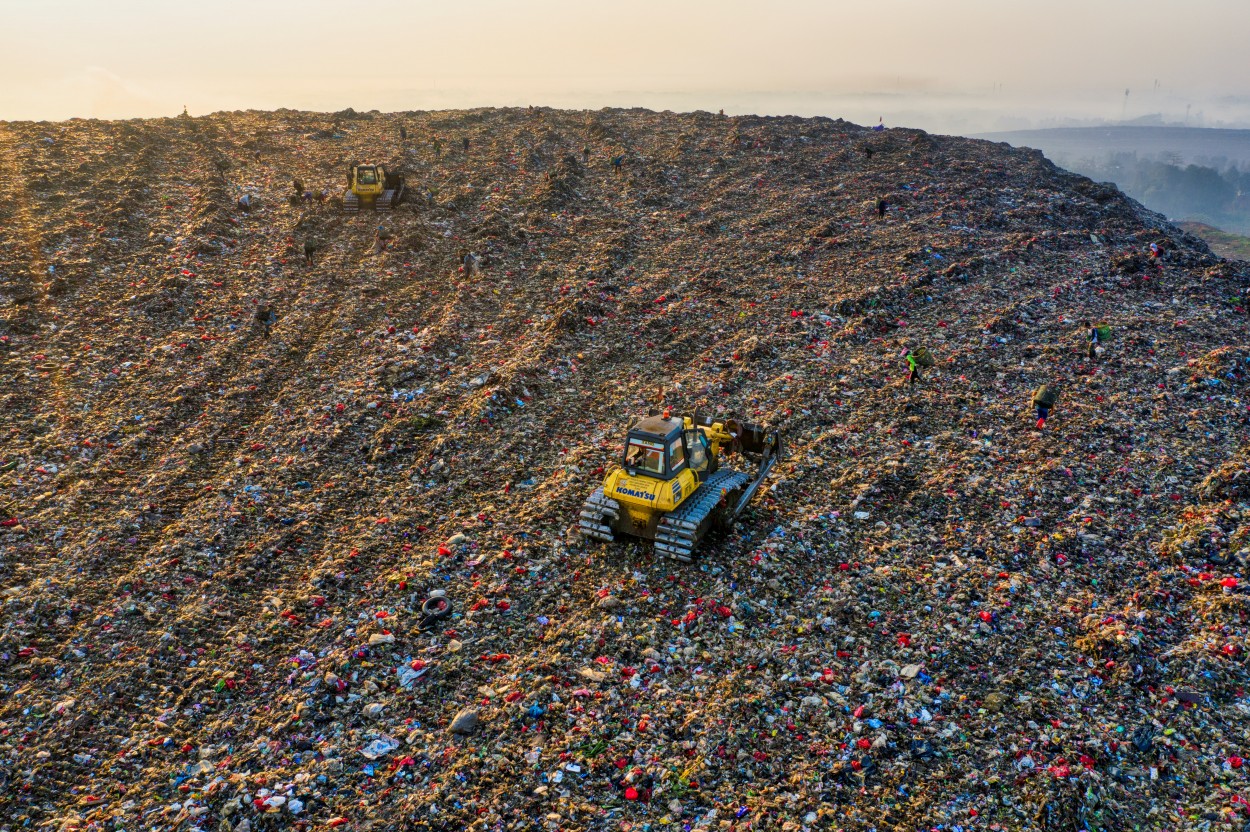Curo: Positively impacting our environment through safe clinical waste disposal

The environmental issue of clinical waste
Every year, around 156,000 tonnes of clinical waste is produced by the NHS – the equivalent to over 400 jumbo jets of waste. This creates approximately 108,000 tonnes of carbon dioxide (CO2) per year, which would take 54 million trees to be planted each year in order to offset these levels of emissions.
The NHS currently outsources its clinical waste to external providers and waste is sent from NHS Trusts and Health Boards weekly via diesel fuelled lorries - which alone, cause various environmental problems, being high in emissions and causing pollution.
The negative effect on the environment
Clinical waste itself can be infectious, toxic, and radioactive, hence why it is so important to create a strategy to manage it efficiently and sustainably.
Clinical waste is normally transported to landfills, which create several negative impacts on our environment.
Among other greenhouse gases, landfills release methane gas, which absorbs and traps the sun’s heat 84 times more effectively than carbon dioxide. This makes it one of the most potent greenhouse gases, being a huge contributor to climate change.
Landfills also normally destroy natural habitats for wildlife, leading to a reduction in biodiversity as animals have to relocate and may die.
As well as releasing harmful gases and destroying habitats, landfills contribute to several other environmental issues, such as polluting soil and water, poisoning birds, and decreasing oxygen levels.
CO2 is a greenhouse gas which traps heat in from the sun. With the significant increase of CO2 emissions since the industrial revolution, more and more heat has been trapped into our atmosphere, warming up the Earth’s climate.
Producing 108,000 tonnes of CO2 a year, the current clinical waste management system for the NHS contributes to the increase in global warming, which has several negative impacts on the environment. Some of these effects include increased extreme weather events, rising sea levels, and habitats being destroyed.
Diesel engines - used for transporting clinical waste - are 10x as toxic and polluting as petrol engines and emit nitrogen oxide gases, also contributing to climate change.
As well as causing damage to the environment, diesel is considered as a group 1 carcinogen, meaning that it causes cancer in humans, alongside other cardiovascular and respiratory health issues. It prematurely kills 38,000 people a year, with this number estimated to increase to 183,000 people by 2040. Air pollution is estimated to kill over 4 times the number of people who die from aids, malaria, and tuberculosis combined.
Furthermore, emissions from diesel engines contribute to the production of ground level ozone which damages crops, trees and other vegetation. It also produces acid rain, affecting soil, lakes, and streams, that can then enter the human food chain via water, produce, meat, and fish.
How Curo can positively impact the environment
When converting to Curo’s strategy of managing clinical waste, the NHS can see up to a 100% reduction in carbon footprint when compared to the current process, fully eradicating carbon emissions from clinical waste. This means that for the average NHS Trust, Curo can bring down the production of CO2 from clinical waste to 0kg, helping to reduce and reverse the damage that waste has on our planet.
Curo’s technology turns hazardous clinical waste into power and materials and reduces the volume of waste by 70%. This will significantly reduce the amount of clinical waste going to landfills as well as the requirement of transporting waste via high polluting lorries, which will result in less air, water, and soil pollution.
Waste outcome from the system and recycled plastics can be turned into many things such as plant pots, garden furniture, food containers, roads, clothing fibres and electricity rather than being thrown away.
Biomass pellets can also be used as an alternate fuel source – they are made from compressed organic material and are used as a renewable fuel, providing cleaner energy with low CO2 emissions compared to fossil fuels.
In addition, Curo provides end-to-end support that will help to teach internal teams how to calculate carbon emissions and how to report and monitor the environmental impact of waste, helping Trusts and Health Boards become more accountable for two waste streams on their own sites.
Conclusion
Curo can play a massive role in helping the NHS reduce its negative impact on the environment. By revolutionising how clinical waste is managed through recycling, reusing and converting it into power and other materials, Curo can help the NHS see reductions in clinical waste related carbon emissions by up to 100%. This will contribute to their aim to become net zero by 2040.